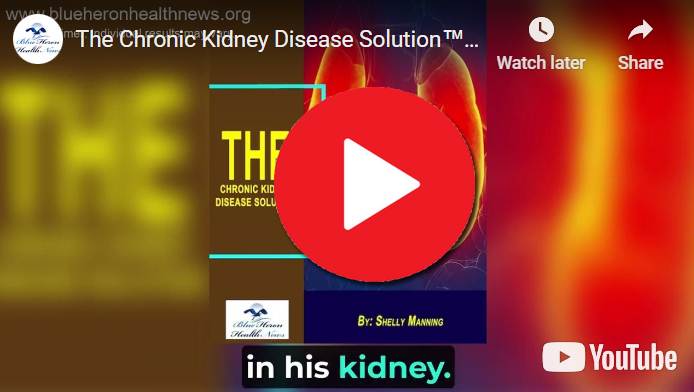
The Chronic Kidney Disease Solution™ By Shelly Manning It is an eBook that includes the most popular methods to care and manage kidney diseases by following the information provided in it. This easily readable eBook covers up various important topics like what is chronic kidney disease, how it is caused, how it can be diagnosed, tissue damages caused by chronic inflammation, how your condition is affected by gut biome, choices for powerful lifestyle and chronic kidney disease with natural tools etc.
What is the role of cardiovascular disease in CKD?
Cardiovascular disease (CVD) plays a significant and interrelated role in the development and progression of chronic kidney disease (CKD). The relationship between CKD and CVD is bidirectional, meaning each condition can exacerbate the other. Here’s an in-depth look at the role of cardiovascular disease in CKD:
Bidirectional Relationship Between CVD and CKD:
- CKD as a Risk Factor for CVD:
- Accelerated Atherosclerosis: CKD accelerates the process of atherosclerosis (hardening and narrowing of the arteries) due to chronic inflammation, oxidative stress, and dyslipidemia, increasing the risk of cardiovascular events.
- Left Ventricular Hypertrophy (LVH): CKD patients often develop LVH due to hypertension, fluid overload, and anemia. LVH is a significant risk factor for heart failure and other cardiovascular complications.
- Vascular Calcification: CKD promotes vascular calcification through disturbances in calcium and phosphate metabolism, contributing to increased arterial stiffness and cardiovascular risk.
- CVD as a Risk Factor for CKD:
- Reduced Renal Perfusion: Cardiovascular conditions such as heart failure and coronary artery disease can reduce renal perfusion (blood flow to the kidneys), leading to ischemic injury and kidney damage.
- Hypertension: Hypertension, a common manifestation of CVD, is both a cause and consequence of CKD. Elevated blood pressure damages the renal vasculature and accelerates the decline in kidney function.
- Heart Failure: Heart failure, particularly congestive heart failure, can lead to renal congestion and decreased kidney function due to impaired cardiac output and fluid overload.
Mechanisms Linking CVD and CKD:
- Hemodynamic Changes:
- Increased Blood Pressure: Hypertension, common in both CKD and CVD, increases glomerular pressure and promotes renal damage. Managing blood pressure is crucial for preventing CKD progression and reducing cardiovascular risk.
- Altered Renal Hemodynamics: Conditions like heart failure lead to decreased renal perfusion and increased central venous pressure, impairing kidney function.
- Neurohormonal Activation:
- Renin-Angiotensin-Aldosterone System (RAAS): Overactivation of the RAAS is common in both CKD and CVD. RAAS overactivation leads to vasoconstriction, sodium retention, and increased blood pressure, exacerbating both kidney and heart disease.
- Sympathetic Nervous System: Increased sympathetic nervous system activity in CKD and CVD contributes to hypertension, arrhythmias, and further renal damage.
- Metabolic Disturbances:
- Dyslipidemia: Both CKD and CVD are associated with dyslipidemia, characterized by elevated levels of triglycerides and low-density lipoprotein (LDL) cholesterol. Dyslipidemia promotes atherosclerosis and cardiovascular risk.
- Insulin Resistance: CKD patients often develop insulin resistance, which increases the risk of diabetes and metabolic syndrome, further contributing to cardiovascular risk.
- Inflammation and Oxidative Stress:
- Chronic Inflammation: Both CKD and CVD are characterized by chronic low-grade inflammation. Elevated levels of pro-inflammatory cytokines contribute to endothelial dysfunction, atherosclerosis, and progressive kidney damage.
- Oxidative Stress: Increased oxidative stress in CKD and CVD leads to cellular damage, promoting both cardiovascular and renal pathology.
Impact of CVD on CKD Progression:
- Accelerated Decline in Kidney Function:
- CVD exacerbates the decline in glomerular filtration rate (GFR) through mechanisms such as reduced renal perfusion, increased glomerular pressure, and ongoing vascular damage.
- Increased Risk of End-Stage Renal Disease (ESRD):
- Patients with concomitant CVD and CKD are at a higher risk of progressing to ESRD, requiring dialysis or kidney transplantation.
- Higher Mortality and Morbidity:
- The presence of CVD in CKD patients significantly increases the risk of cardiovascular events, hospitalization, and mortality. Cardiovascular complications are a leading cause of death in CKD patients.
Management Strategies:
- Comprehensive Cardiovascular Risk Reduction:
- Blood Pressure Control: Aggressive management of hypertension with antihypertensive medications (e.g., ACE inhibitors, ARBs, beta-blockers) to reduce both cardiovascular and renal risk.
- Lipid Management: Use of statins and other lipid-lowering agents to manage dyslipidemia and reduce atherosclerotic risk.
- Glycemic Control: Tight control of blood glucose levels in diabetic patients to prevent both CKD progression and cardiovascular complications.
- RAAS Inhibition:
- ACE inhibitors and ARBs are crucial in managing both CKD and CVD due to their effects on blood pressure, proteinuria reduction, and cardiovascular protection.
- Management of Heart Failure:
- Use of diuretics, beta-blockers, and RAAS inhibitors to manage heart failure symptoms and prevent renal congestion.
- Lifestyle Modifications:
- Diet: A heart-healthy, kidney-friendly diet low in sodium, saturated fats, and refined sugars. Incorporating fruits, vegetables, whole grains, and lean proteins.
- Exercise: Regular physical activity to improve cardiovascular health and manage weight.
- Smoking Cessation: Quitting smoking to reduce both cardiovascular and renal risk.
- Regular Monitoring:
- Frequent monitoring of kidney function (GFR, urine protein levels), blood pressure, lipid levels, and glucose levels to detect and manage complications early.
Conclusion:
Cardiovascular disease plays a crucial role in the development and progression of chronic kidney disease. The bidirectional relationship between CKD and CVD involves complex mechanisms, including hemodynamic changes, neurohormonal activation, metabolic disturbances, inflammation, and oxidative stress. Effective management of both conditions through comprehensive cardiovascular risk reduction, RAAS inhibition, lifestyle modifications, and regular monitoring is essential for improving outcomes and reducing morbidity and mortality in patients with CKD and CVD.

The Chronic Kidney Disease Solution™ By Shelly Manning It is an eBook that includes the most popular methods to care and manage kidney diseases by following the information provided in it. This easily readable eBook covers up various important topics like what is chronic kidney disease, how it is caused, how it can be diagnosed, tissue damages caused by chronic inflammation, how your condition is affected by gut biome, choices for powerful lifestyle and chronic kidney disease with natural tools etc.